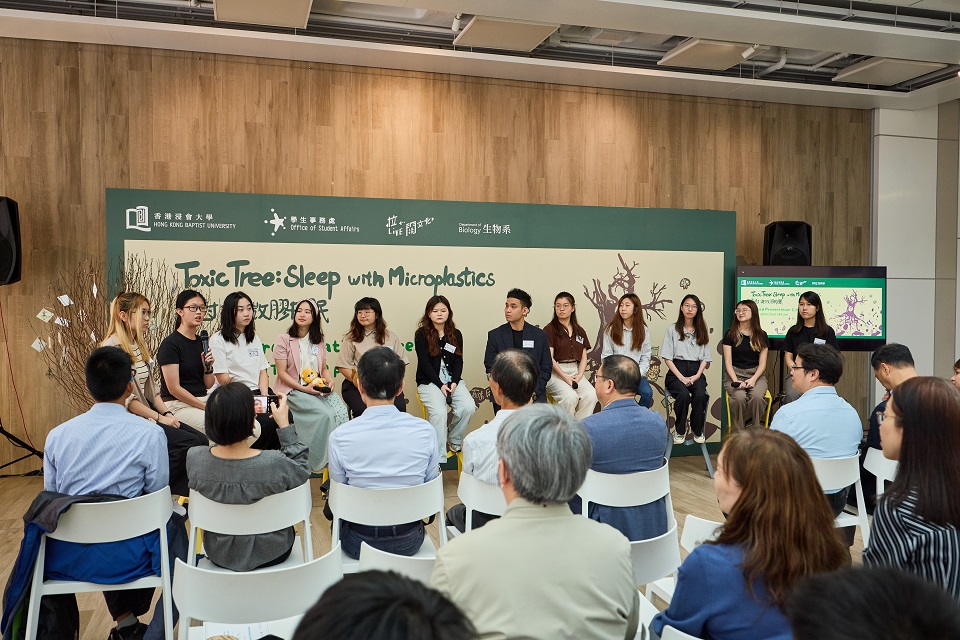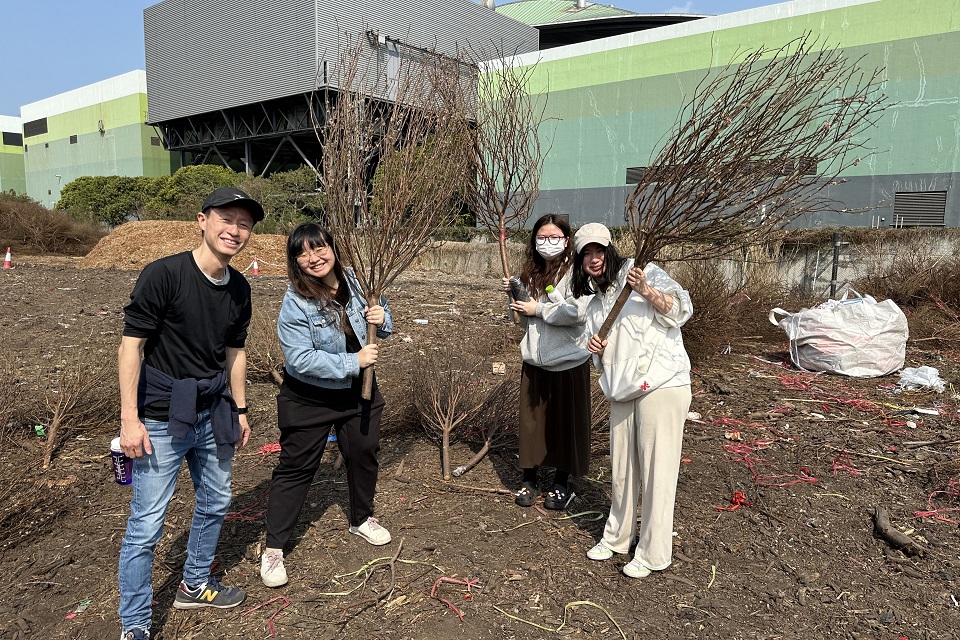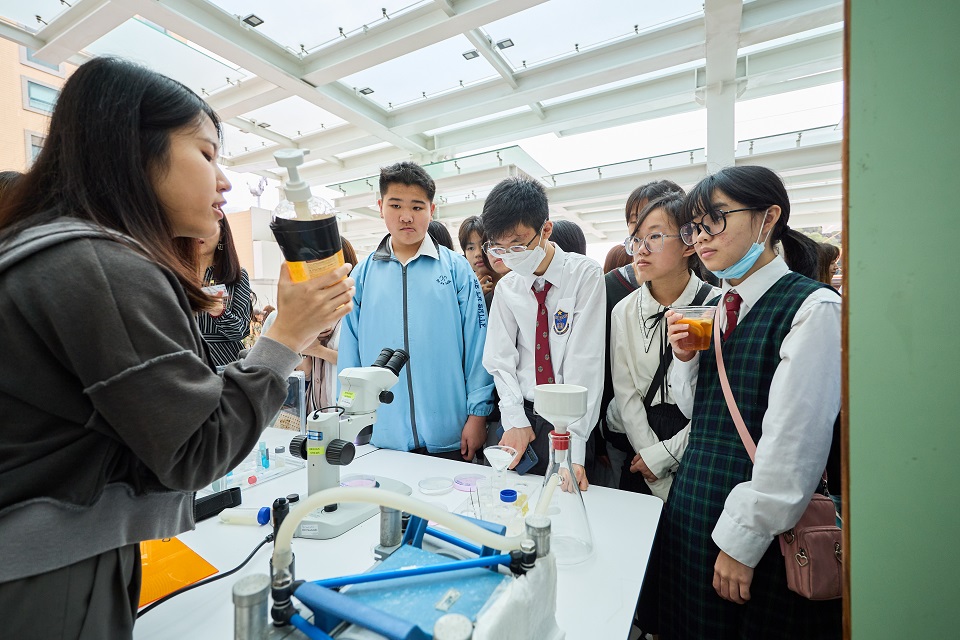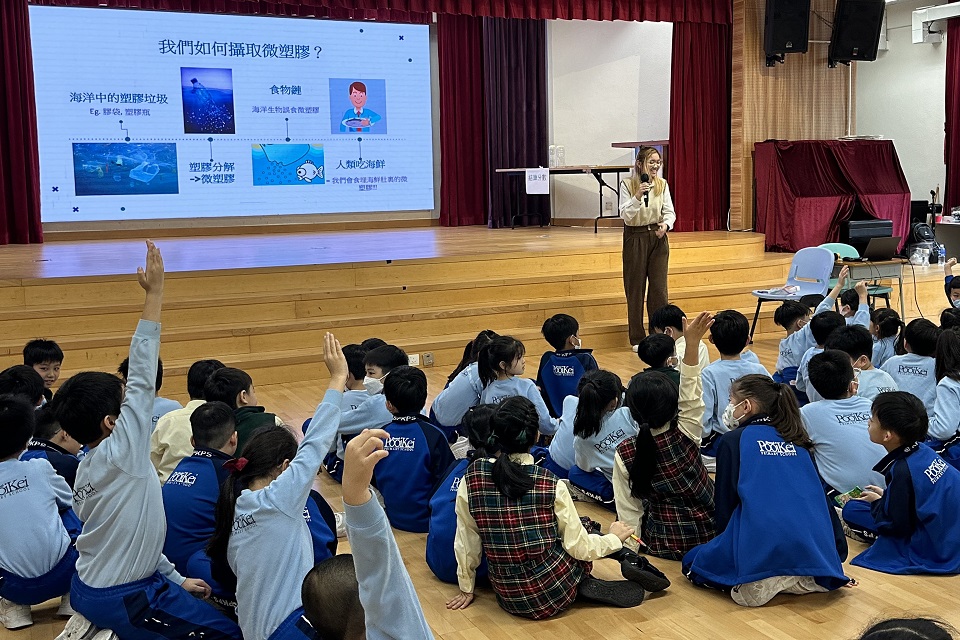Discover HKBU
“Toxic Tree: Sleep with Microplastics” project raises concern for microplastics
31 May 2024
The Cultural Literacy Programme of the Office of Student Affairs co-organised a STEAM project titled “Toxic Tree: Sleep with Microplastics” with Dr Patrick Yue, Senior Lecturer of the Department of Biology, and 12 students from February to April. This project tailored activities integrating scientific knowledge with artistic expression for different age group students to deepen their understanding of how microplastics are produced in daily life and their impacts. Over 1,000 students participated in the project, spanning from kindergartens to primary and secondary schools, as well as HKBU.
“Last year, I had a prior trial in the course ‘BIOL2017 Cell Biology’ and our topic was Poietic Microscope. The experience showed that students desired interactive class teaching, compared to the time when face-to-face activities were suspended during the pandemic. This year I use the plan in BIOL3016 Environmental Health and Toxicology that I collaborated with the Cultural Literacy Programme again and planned for the “Toxic Tree: Sleep with Microplastics” project,” explains Dr Yue on how the project came about.
The 12 students who participated in the project were from the Programmes of Applied Biology, Government and International Studies, Ethics and Public Affairs, Communication, and Business Administration. The activities they created for kindergarteners involved storytelling to illustrate the impact of plastic on organisms and the environment, along with a game for classifying plastic and non-plastic wastes.
They engaged primary school students with games which allowed them to conduct self-assessment of their daily production and absorption of microplastics. For the secondary school group, they focused on conveying scientific knowledge through activities such as a quiz competition. As for the university community, various workshops were organised to convey environmental protection concepts, such as upcycling discarded peach blossom trees into art works that can purify the air.
Microplastics are tiny plastic fragments smaller than 5mm, generated from the natural degradation of plastic materials or through industrial synthesis. Their distinct chemical properties pose potential risks to the health of different creatures, ecosystems, and the environment.
“The toxicity of microplastics can be found in humans through the food chain and our daily habits. Going forward, we will also try to educate the community about the hazards of microplastics and the importance of environmental protection and sustainability.” Dr Yue highlights.



